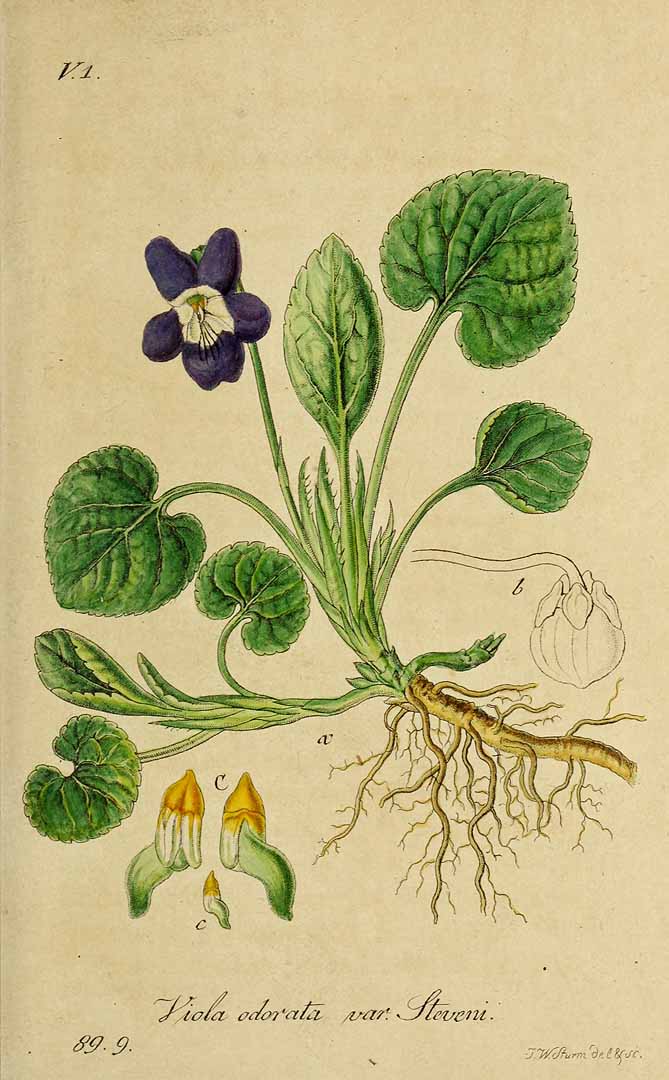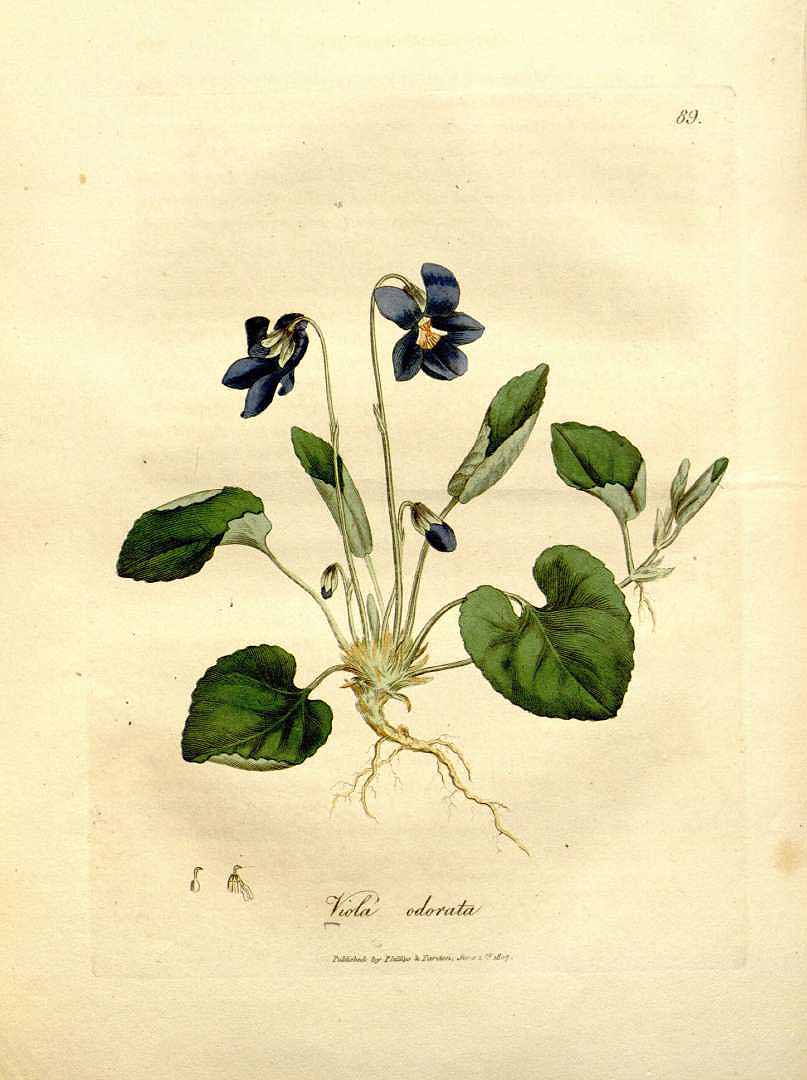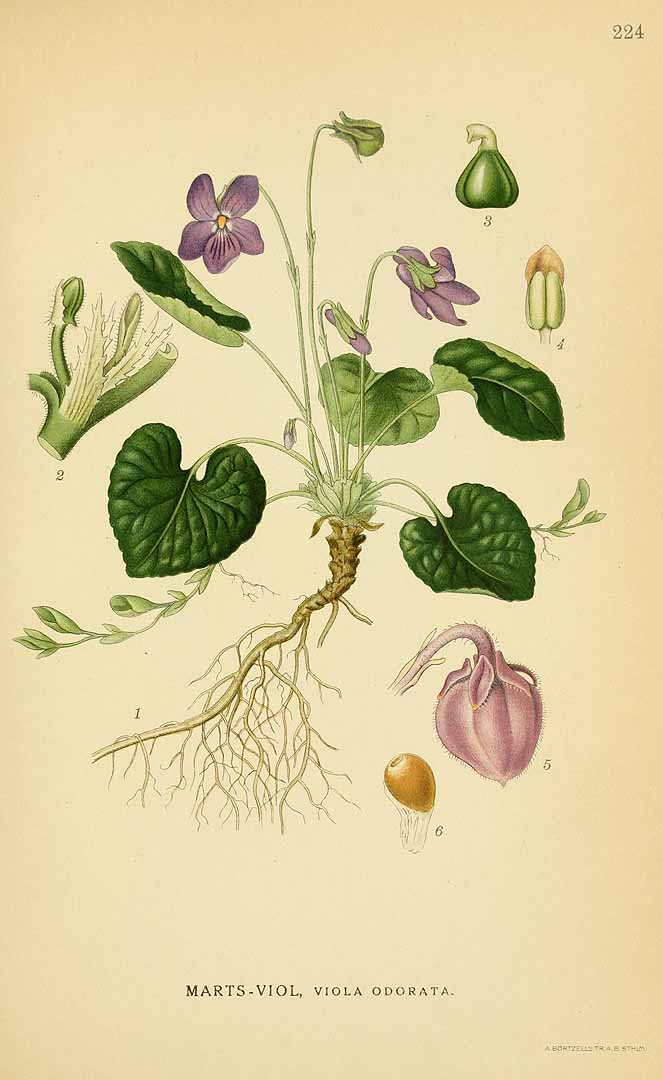! Nouveau site ici !
Vita > Plantae > Magnoliophyta > Magnoliopsida > Violales >
Violaceae > Viola
Viola odorata
(Violette odorante)



 | ***** - ***
| ***** - ***
Vita > Plantae > Magnoliophyta > Magnoliopsida > Violales >
Violaceae > Viola
Viola odorata
(Violette odorante)

Une herbe. Elle continue de croître d'année en année. Il atteint une hauteur de 10 à 15 cm et une largeur de 30 à 60 cm. Il a enraciné les coureurs. Les feuilles sont en forme de cœur. Ils se regroupent ... (traduction automatique)
→suite
⬀
Le  donne accès au menu
donne accès au menu (c'est votre point de repère) 😊 ;
En dessous vous avez la classification, à partir de la vie (Vita, premier rang) jusqu'à la classe au dessus de la plante, dont vous trouvez ensuite le nom scientifique/botanique (latin) puis le nom commun (français), le cas échéant ;
C'est aussi un lien vers la fiche complète (tout comme la ✖, en bas à droite, et le +, en dessous de la description) ;
Vient alors l'illustration (ou ce qui la remplace, en attendant), la comestibilité :
Et en bas
⬂







